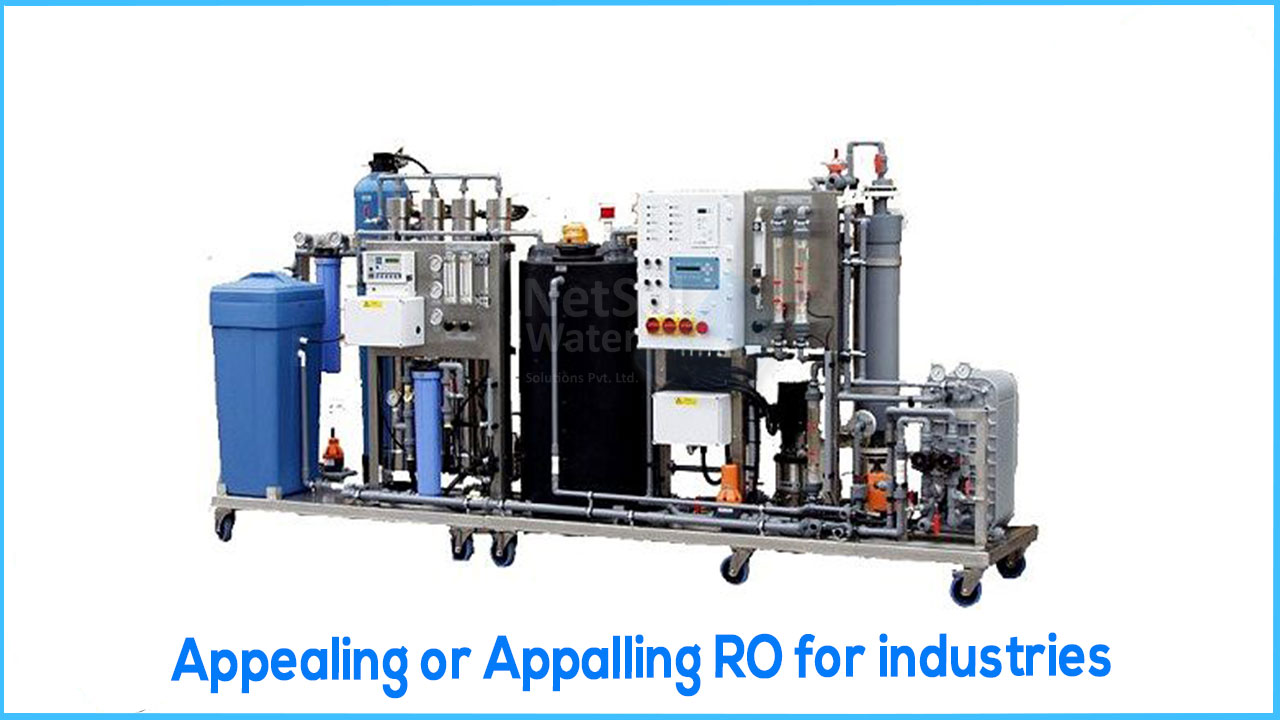Before deciding whether an industry should invest in reverse osmosis system or not, one should understand the uses of reverse osmosis system in an industry. Since industries differ in production and machinery, there water demands (qualitative and quantitative) differ from one industry to other. In this article we will understand the uses of reverse osmosis system in an industry and will decide whether the investment is appealing or appalling?
INDUSTRIAL REVERSE OSMOSIS& FACTORS
Reverse osmosis (RO) is one of the most cost-effective methods of treating boiler feed water, cooling tower makeup water and industrial process water. Reverse osmosis may also be used to produce demineralized water, negating the need to handle and dispose of hazardous chemicals.
For an industrial RO system to operate at maximum efficiency, several factors must be taken into consideration during the design process.
WATER SOURCE
The source of feedwater for industrial reverse osmosis has one of the greatest impacts on the overall design of the unit, including the number of required filtration stages for pretreatment.
Water from a source that is stable in composition and temperature, such as a groundwater supply, will typically require a simpler pre-treatment process than water from a seasonal or more complex water source, such as surface water or wastewater.
TEMPERATURE AND FLOW RATE
The flux rate, or rate at which water passes through a membrane, varies markedly with water temperature. Warm water will flow much quicker through the membrane of a reverse osmosis system than cold water. Most industrial reverse osmosis systems are rated by the factory to treat water at an ideal temperature of 77° Fahrenheit.
Water temperature and flow rate parameters must be taken into consideration during the design of a reverse osmosis system and pretreatment equipment.
PRETREATMENT
Chlorine, while beneficial for disinfecting municipal water, will deteriorate reverse osmosis membranes. Dechlorination is achieved by activated carbon filtration of reverse osmosis feedwater treated with a chlorine reducing agent, like sodium bisulfite, as part of the pretreatment process.
To prevent scaling from calcium and magnesium carbonates, feedwater should be pretreated with a cation exchange water softener or chemical antiscalant, depending on the water hardness level.
MICROBIOLOGICAL CONTAMINANTS
Although not generally as damaging as scaling, microbiological contaminants trapped in the membrane of a reverse osmosis system can also result in fouling and a loss of production capacity. Pretreatment is important when working with RO and nanofiltration (NF) membranes due to the nature of their spiral wound design, which only allows water to flow one-way through the system..
SILT DENSITY INDEX
Significant levels of very fine particles (i.e., silt) in water can result in frequent membrane cleanings, or even premature membrane failure. Oftentimes, particles causing potential membrane fouling average less than 5 microns in diameter and the water may appear clear. To prevent a loss of efficiency and down time, feedwater should be evaluated using a silt density index test (SDI) in the field prior to designing pre-treatment for reverse osmosis systems.
These are some main factors that one should account for while designing a RO unit for their industry. The cost benefit analysis will be most important to analyse the investment that will go to pretreatment and other process.
Reverse Osmosis unit is appealing to industry depending upon the prime factors which doesn’t require any additional cost.




